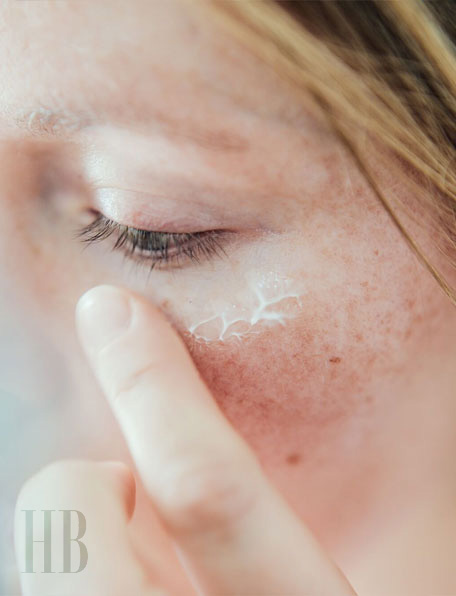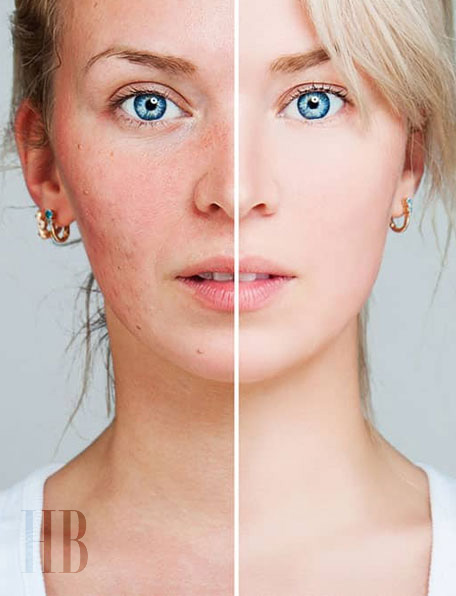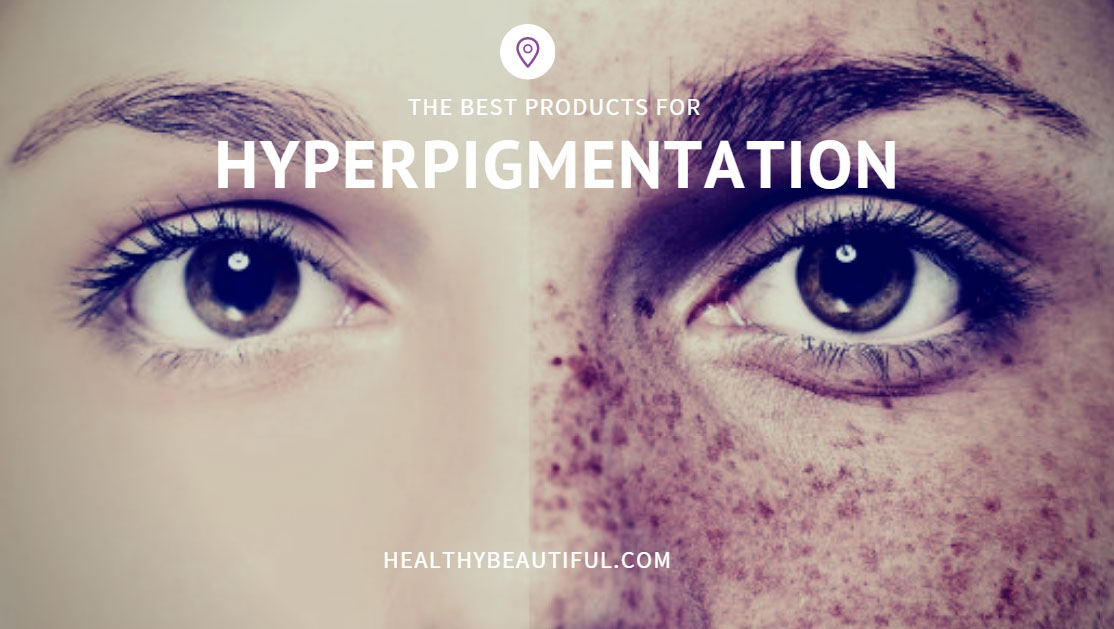Understanding & Improving Hyperpigmentation
Hyperpigmentation can cause significant stress to people who have it and is one of the most challenging skin problems to treat.
This condition is predominantly the result of post-inflammation from acne, sun exposure, hormones, or skin trauma.
In this article, we’ll share the various products and treatment options that are available to you and discuss how to get visible results and improvements on the skin.
Before you start any sort of treatment, it’s important to understand that these treatments are not to whiten or change someone’s skin color, but helping to bring out the balance and correct signs of hyperpigmentation.
Video: Hyperpigmentation – Daily Do's of Dermatology
- Understanding & Improving Hyperpigmentation
- What are the common causes of hyperpigmentation?
- Ask the Expert: Things to consider before starting
- What are the keys to effectively treating hyperpigmentation?
- Skincare Guide: How to Get Rid of Hyperpigmentation on the Face
- What to Expect & Aftercare Reminders
- References:
- Recommended Acne Programs
What are the common causes of hyperpigmentation?
The common causes of hyperpigmentation[1] are:
- Sun exposure – sun spots or brown spots are the easiest to treat as it is in the upper layer of the skin. For those aged 50 and above, these are known as liver spots or age spots.[2]
- Acne – post-inflammatory hyperpigmentation.[3] These are the scars left from the aftermath of inflamed acne lesions. This type of hyperpigmentation is formed deep in the skin and will take longer to correct. When choosing topical products, look for salicylic acids, enzymes, anti-inflammatory ingredients.
- Hormonally induced (pregnancy, hormone, or birth control pills) or commonly known as melasma.[4] Like post-inflammatory hyperpigmentation, this type goes down to the epidermis of the skin and will also take time to treat. Look for oil or gel-based exfoliants with retinol, lactic acid, peptides, Trichloroacetic acid (TCA).
- Skin trauma from medical procedures like laser treatments.
It’s important to identify the cause of your hyperpigmentation in order to properly plan your approach accordingly.
Remember, the depth of the pigmentation will determine the degree of effectiveness when treating hyperpigmentation.

Ask the Expert:
Things to consider before starting
BY SAMANTHA WELCH, ESTHETICIAN
- Your skin’s sensitivity level
- Exfoliation history (lasers, IPL, chemical peels)
- Skin products you are currently using
- Medications (hormone or birth control pills)
- Medical procedures taken
Any of the above are possible contributing factors to changes in skin color.
What are the keys to effectively treating hyperpigmentation?
The most important aspects of treating hyperpigmentation are:
- Exfoliation or inducing rapid cell turnover of pigmented layers and removing the dead cells
- Control the overproduction of melanin by driving active ingredients into the new skin (vitamin C, Licorice, Niacinamide, Oligopeptide-34, Zinc Glycinate, white tea, etc.)
Extra Step: For faster results, you can use a variety of technologies to help the skin absorb your brightening products. These are the devices clinics use to treat their patients suffering from hyperpigmentation.
When these machines came out years ago, they were bulky and incredibly expensive, and the only people who had access to them were licensed dermatological clinics. With the advancement in technology and the increase in demand, however, these tools are now available in portable forms and can be safely used at home.
Video: Successfully Treating Hyperpigmentation by Dr. Diana Howard, The Dermal Institute IDI
Skincare Guide:
How to Get Rid of Hyperpigmentation on the Face
Equally important as knowing what products to use is learning how to use them and having a proper treatment process in place.
This will ensure that you can effectively treat your hyperpigmentation in the fastest and most cost-effective way possible. Alternatively, you can use the below as your DIY guide.
We’ve listed down the basic steps dermatologists and aestheticians use to treat hyperpigmentation to help you in your treatment.
If you know what the cause of your pigmentation is – acne or post-inflammatory, sun-induced, or hormonally-induced; then you can perform the same treatment process that professionals do at a much more affordable rate and at the convenience of your home.
Use an effective, yet gentle cleanser
Avoid ones that have a lot of potentially irritating ingredients/lots of extra “features”
I know this sounds basic, and you may lean towards cleansers that have a multitude of extra ingredients like whitening or brightening.
However, as tempting as those may sound, it’s very important to not risk skin irritations or sensitivity at this stage. Keeping your skin not only clean but also balanced will ensure that your skin will be ready for products with active ingredients that focus on clearing your spots.
If you use heavy makeup, you can use the double cleansing method for a more thorough cleansing.
- Remove all makeup and dirt using an oil-based cleanser. If you have acne-prone skin, use a non-comedogenic cleansing oil (e.g. L’Occitane Shea Cleansing Oil). To increase effectiveness and remove deep-seated impurities in the pores, you can complement this step with an ultrasonic blade (e.g. Bio-Therapeutic bt-micro fusion Ultrasonic Skin Perfecting Tool, DERMAFLASH DERMAPORE Device).
- Wash off any remaining debris with a gentle cleanser. If you have oily skin without any active acne lesions, you can also use a dual-action cleanser or other similar products.
Exfoliate regularly
To help you quickly shed damaged skin and increase product efficacy
Exfoliation is a very crucial step in getting rid of your hyperpigmentation.
It’s a process that does two key things:
- It helps accelerate skin cell turnover, meaning it discharges the top layer of damaged skin and introduces fresh, new skin at a faster rate than normal (28 days is the normal cycle. Yes, you have to wait for almost a month before your skin starts to shed; and that’s just the topmost layer.)
- It sloughs off any clogs and accumulated dead skin cells that may be blocking products from penetrating the skin. This is one of the most common problems that people fail to realize when they think a product isn’t working. It’s not that the product itself isn’t effective, it just can’t get the active ingredients to where it needs to go!
But before doing either of these steps, you need to make sure you are not under any medically prescribed exfoliant. If you are, you may need to wait a few weeks after your treatment is done so as to not cause any irritations or side effects.
There are two ways you can go about regular exfoliation:
- Chemical exfoliation. These are products that use acids in varying degrees of concentration to induce exfoliation. These can come as a lotion or a peel and have ingredients like glycolic acid, lactic acid, peptides, retinol, or TCA. You can check our AHA & BHA category for a list of products that you can use.
The type of chemical exfoliant you use should depend on your lifestyle. If you would rather do it in one go, use a weekly peel. If you can do it daily, you can opt for a lotion or an AHA serum. This will work well for sun damage or acne-induced hyperpigmentation. - Physical exfoliation. This is ideal for those with deeper, post-inflammatory hyperpigmentation and acne scars. Microdermabrasion will stimulate the skin to unclog pores, remove dead cells, improve acne scarring or open pores, create a refined effect, and aid in the penetration of active ingredients. You can refer to our list of the best microdermabrasion machines for a selection of the most effective portable tools on the market.
You can choose to do either of the two, whichever is best applicable to your situation. Depending on the product, this can be done daily to once every two to three weeks, depending on how sensitive your skin is.
Correcting Creams, Serums & Masks
Lighten dark spots with melanin reducing products
Now that your skin is fresh and newly exfoliated, it’s in its optimum condition to receive active ingredients.
Dark spot correctors, brightening serums, and vitamin-based masks penetrate deep inside to clear impurities and reduce melanin formation as your skin continues to heal.
Look for hydrating and brightening properties in ingredients like vitamin C, vitamin E, licorice, hyaluronic acid, oligopeptide-34, zinc glycinate, white tea, or green tea. (e.g. Karuna Brightening + Face Mask, Borghese Fango Brillante Brightening Mud Mask for Face and Body, Talika Bio Enzymes Brightening Mask)

Recommended Acne Programs
If you're suffering from severe acne, it's best to undergo a program that will help you get to the root of the problem and address the causes.
- The Acne No More System by Mike Walden – Restores hormonal balance to achieve permanent clear skin for life.
- The “Trifecta Glow” System – A highly potent brightening treatment guaranteed to reduce the appearance of dark spots & acne scars within 4 weeks.
- La Roche-Posay – Effaclar Dermatological 3 Step Acne Treatment System
- Murad – Acne Control Kit – Breakout Skin Care Kit
- Mario Badescu – Acne Starter/Control/Repair Kit
- Dermalogica – Clear Start Breakout Clearing Kit
Use Facilitating Devices (Optional)
Double down to improve product absorption
One of the last processes in a facial treatment is to facilitate skin absorption through massage or any of these breakthrough electronic methods:
- Ultrasonic Technology – helps ingredients penetrate the skin through a process called “sonophoresis”. These are micro-vibrations on the skin that create microscopic gaps in the skin to allow ingredients to penetrate deep. Tissues are also heated in the process. (e.g. GUGUG Skin Scrubber Skin Spatula, Project E Beauty Wireless Ultrasonic Skin Care Scrubber).
- Iontophoresis – is performed using microcurrent machines that penetrate water-based products into the skin. This is an excellent method of driving serums or moisturizers to specifically target areas with hyperpigmentation (e.g. FOREO BEAR mini App-connected Microcurrent Facial Toning Device, Project E Beauty Galvanic Facial Lifting Roller).
- LED Phototherapy – not only improves product absorption but also promotes skin regeneration and stimulates collagen formation in the skin. These are also used for skin rejuvenation (e.g. LED Face Mask Light Therapy, 7 Led Light Therapy Facial Skin Care Mask).
Always Use Sunscreen
Stop sun damage and skin darkening in its tracks
If you can only do one thing in all of these, do this.
All of the steps above will be null and void if you keep it unprotected from the melanin-inducing effects of the sun.
Whilst your skin is healing, keep the sun’s rays from damaging your skin by wearing sunscreen day in and day out.
Minimum requirements when looking for sunscreen are SPF 30, and anti-UVA/UVB protection. If you have oily skin or are prone to breakouts, use non-comedogenic and hypoallergenic sunscreens.
What to Expect & Aftercare Reminders
Once you have all the products and tools you need, you will have:
- a more effective process in treating your hyperpigmentation because you can do them on a much more regular basis
- faster results because of the frequency of treatments
- a cheaper alternative than getting all these done at the aesthetician’s office
Last reminders to maximize your treatments
Regardless of which products you choose, there are some key rules when treating hyperpigmentation:
- You must be consistent and regularly use your products and treatments at home
- Products must be used in the morning and evening for a minimum of 8 weeks before any signs of visible improvements
- Some patches may look darker before they look lighter as you’re speeding up the process
- Your skin should never be exposed to sunlight unprotected. Daily daylight protection at the minimum of SPF 30 is critical when treating hyperpigmentation.
- Wear a wide-brimmed hat outside whenever you can
That’s it, and we hope you’ve found this article useful. If yes, don’t forget to subscribe to our channels.
References:
- Tovey, D. (2016). Common Hyperpigmentation Disorders in Adults: Part I. Diagnostic Approach, Cafe au Lait Macules, Diffuse Hyperpigmentation, Sun Exposure, and Phototoxic Reactions – American Family Physician.
- Publications, H. Age Spots (Solar Lentigo, Liver Spots) – Harvard Health. [online] Harvard Health.
- Davis EC, Callender VD. Postinflammatory hyperpigmentation: a review of the epidemiology, clinical features, and treatment options in skin of color. J Clin Aesthet Dermatol. 2010 Jul;3(7):20-31. PMID: 20725554; PMCID: PMC2921758.
- Dermnetnz.org. Melasma (facial pigmentation). DermNet NZ.
- Aad.org. (2016). Variety of options available to treat pigmentation problems | American Academy of Dermatology.
- Aocd.org. (2016). Hyperpigmentation – American Osteopathic College of Dermatology (AOCD).
- Dermnetnz.org. (2016). Melasma (facial pigmentation). DermNet NZ.
- Kornhauser, A. (2010). Applications of hydroxy acids: classification, mechanisms, and photoactivity. CCID, p.135.
- Jimbow, K. and Minamitsuji, Y. (2001). Topical therapies for melasma and disorders of hyperpigmentation. Dermatologic Therapy, 14(1), pp.35-45.
- Nieuweboer-Krobotova, L. (2012). Hyperpigmentation: types, diagnostics and targeted treatment options. Journal of the European Academy of Dermatology and Venereology, 27, pp.2-4.
- Polat, B., Blankschtein, D. and Langer, R. (2010). Low-frequency sonophoresis: application to the transdermal delivery of macromolecules and hydrophilic drugs. Expert Opinion on Drug Delivery, 7(12), pp.1415-1432.
- University of Maryland Medical Center. (2016). Skin wrinkles and blemishes.


Hey, Great tips in this content. Thanks for sharing. Informative post. We all strive for a healthy, glowing and younger-looking skin. Happy skin is a reflection of a healthy mind and a healthy body.